Difference Between Linear and Non Linear Data Structures
Data Structure
A data structure is a data object together with the relationships between the instances and the individual elements that compose an instance. These relationships are defined by the operations performed on them. The data structures are very useful in writing clean codes and code optimization. In the computer branch, the data structures are designed to work with versatile programs and algorithms efficiently to save the space and time of an individual.
In computer science, we classify the data structure into following two categories:
- Linear Data Structure, and
- Non-Linear Data Structure.
We are now going to look into both types of data structure in brief:
Linear Data Structure
We can define the linear data structure as the linear collection of data, objects or elements. Each element in the linear data structure is attached to its previous and next elements. We can easily traverse or access the elements in linear order or a single run. The traversing or accessing the elements may differ depending on which linear data structure we use. Implementing the linear data structures is quite easy than the non-linear ones as the data are stored sequentially in the linear data structures.
Array, Linked list, Queue and Stack are the different types of linear data structures.
Let's learn about each of them:
- Array – An array is the sequential and ordered collection of elements of the same data types in which each element is accessed by its index value. The major drawback of the array data structure is it only stores the elements of the same data types and requires contiguous memory. To store elements of different data types, we need to create a new array for each data type.
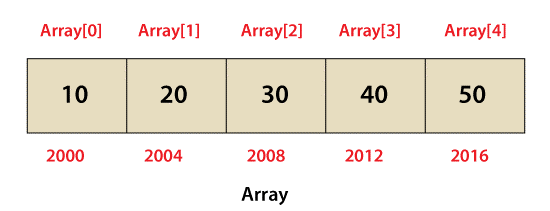
- Linked list – A linked list is an unordered and linear collection of elements. A linked list consists of nodes where each node stores some data and a pointer pointing to the next node. The main advantage of the linked is it does not require contiguous memory, the nodes can be stored on different locations in the memory, and its main disadvantage is one can not access a random node in the linked list, the accessing and traversing of nodes is done from starting node to ending node. To solve the accessing and traversing problems, we use its different versions such as circular linked list, doubly linked list, and doubly circular linked list.
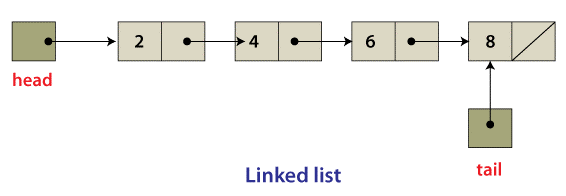
- Queue – A queue is the first in first out data structure where the element added in starting will be removed first and the element added in last will be removed in last. The queue data structure is used in different algorithms such as Graph traversal algorithms (Breadth-first search algorithm), CPU and Disk Scheduling algorithms etc.
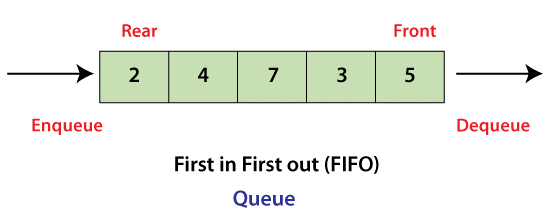
- Stack – A stack is the last in first out data structure where the element inserted in last will be removed first and the element added in starting will be removed in last. The stack data structure is used in Recursion, Managing Function calls, Algebraic Expressions Evaluations, etc.
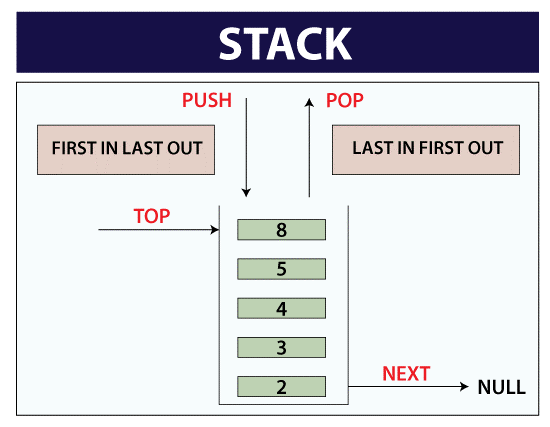
Non-Linear Data Structure
We can define the non-linear data structure as the unordered and non-linear collection of elements in which the elements are stored in a non-contiguous manner in computer memory. One can not access the data in a single run as the elements are not arranged sequentially. The implementation is more difficult than the implementation of linear data structure. In a non-linear data structure, each element is attached to two or more other elements. The accessing and traversing elements in non-linear data structures requires more complex algorithms.
Tree and graphs are the different types of non-linear data structure:
- Tree – A tree is defined as the non-linear and unordered collection of elements. A tree is built of multiple linked nodes where each node is connected to at least one node. The starting node is known as the root node. The node pointing to a node is that node's parent, and that node is its child. Two nodes of the same are parents are known as the siblings. Nodes present at the last level or nodes having no child are the leaf node. The structure of the tree data structure is shown below:
Examples of the tree data structure are Binary Tree, Complete Binary Tree, Balanced Tree, Unbalanced Tree, Fully (Perfect) Binary Tree, etc.
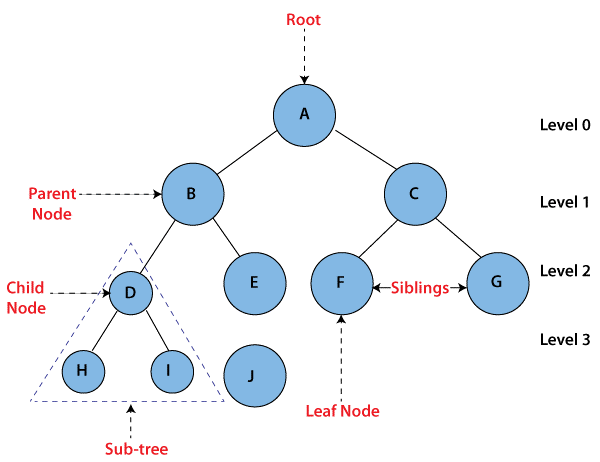
- Graph – A graph is also a non-linear data structure of finite number of nodes. A graph consists of edges and vertices. Vertices are used to store data and edges are used to represent the relationship between the nodes. Graphs are very useful in representing the relation between multiple objects. The graph data structures are used by google maps, LinkedIn, Facebook, etc.
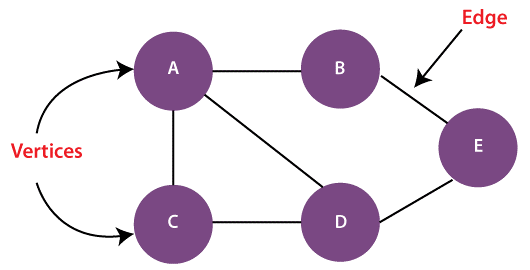
Difference between the Linear and Non-Linear Data Structure:
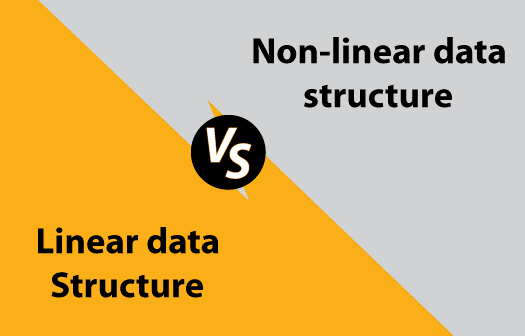
| Basis | Linear Data Structure | Non-Linear Data Structure |
| Structure | The elements in linear data structures are arranged in linear or sequential manner. These elements are attached to their previous and next element. | In non-linear data structures, the arrangement of the elements follows the hierarchical or non-linear pattern. |
| Types | Array, Linked list, Queue, and Stack are the different types of linear data structure. | Graph and tree are the different types of non-linear data structure. |
| Implementation | Implementation of linear data structure is easier than that of non-linear data structure this is due to the arrangements of elements. | The implementation of non-linear data structures is more difficult than that of linear data structure because of the non-linear arrangements of the elements, and it requires more complex programming to implement. |
| Accessing and Traversing | All the elements in linear data structures can be accessed or traversed in a single run. | In non-linear data structure, one cannot traverse all elements in a single run. Traversing of the elements requires multiple iterations and back tracking. |
| Levels | Linear data structures are the single level data structures as the arrangement of elements do not follow any hierarchical manner instead, they are arranged in single level. | Non-linear data structures are the multilevel data structure as the arrangement of the elements follows the hierarchical or non-linear patterns. |
| Arrangements | The elements in the linear data structures are attached to their previous and next element only. | The elements in the non-linear data structure are attached to two or more elements. |
| Time Complexity | The time complexity of a program depends on the data structure used to implement that program. In case of linear data structure, the time complexity of a program increases with the increase in size or length of the data structure used. | In case of non-linear data structure, the size of the data structure does not affect the time complexity of a program means the time complexity remains same with the increase in size of the data structure. |
| Space Utilization | Most of the linear data structure requires contiguous memory allocation, because of this, the memory is not utilized in an efficient way. | The arrangement of elements in non-linear data structure do not requires contiguous memory allocation. Hence, the memory is utilized in a very efficient way. |
| Application | Linear data structures are used in Managing function calls, Searching algorithms, software developments, etc. | The non-linear data structures are used in file systems, programming environment, image processing, organization charts, Artificial intelligence, etc. |